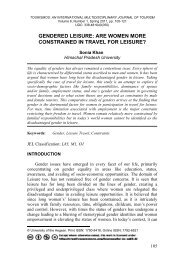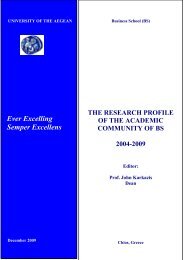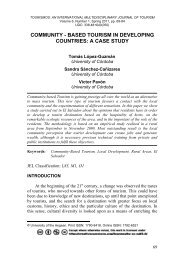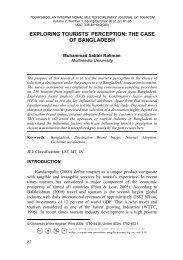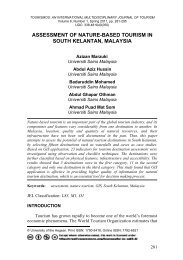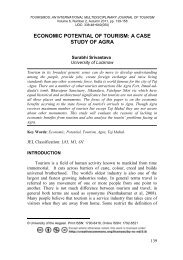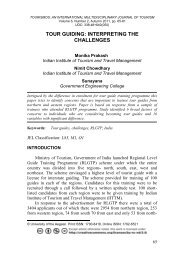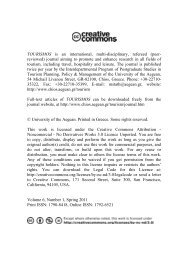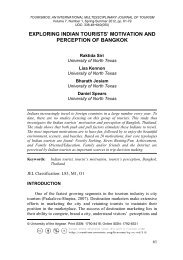COMMONS DEED
COMMONS DEED
COMMONS DEED
You also want an ePaper? Increase the reach of your titles
YUMPU automatically turns print PDFs into web optimized ePapers that Google loves.
-0.076<br />
-0.069<br />
-0.061<br />
-0.053<br />
-0.046<br />
-0.038<br />
-0.031<br />
-0.023<br />
-0.015<br />
-0.008<br />
0.000<br />
0.008<br />
0.015<br />
0.023<br />
0.031<br />
0.038<br />
0.046<br />
0.053<br />
0.061<br />
0.069<br />
0.076<br />
0.084<br />
0.092<br />
0.099<br />
0.107<br />
0.114<br />
0.122<br />
-0.077<br />
-0.070<br />
-0.062<br />
-0.054<br />
-0.046<br />
-0.039<br />
-0.031<br />
-0.023<br />
-0.015<br />
-0.008<br />
0.000<br />
0.008<br />
0.015<br />
0.023<br />
0.031<br />
0.039<br />
0.046<br />
0.054<br />
0.062<br />
0.070<br />
0.077<br />
0.085<br />
0.093<br />
0.101<br />
0.108<br />
0.116<br />
0.124<br />
Laura Parte Esteban, María Jesús Such Devesa & Pilar Alberca Oliver<br />
Panel B: Changes in Net Income distribution (ΔNI/AT t-1 )<br />
Debt ratio (q1)<br />
Debt ratio (q3)<br />
16.0%<br />
14.0%<br />
12.0%<br />
10.0%<br />
8.0%<br />
6.0%<br />
4.0%<br />
2.0%<br />
0.0%<br />
16.0%<br />
14.0%<br />
12.0%<br />
10.0%<br />
8.0%<br />
6.0%<br />
4.0%<br />
2.0%<br />
0.0%<br />
The histograms are generated from 1,990 observations. Panel A shows net income<br />
distributions (NI/ATt-1). Panel B represents changes in net income distributions (ΔNI/ATt-<br />
1). The frequency histogram on the left represents low leverage firms (Debt ratio < quartile<br />
1) and the frequency histogram on the right represents high leverage firms (Debt ratio ><br />
quartile 3).<br />
The interval widths are calculated following the Degeorge et al.´s (1999) formula. In<br />
Panel A, the interval widths are 0.016 for NI and 0.008 for ΔNI. In Panel B, the interval<br />
widths are 0.008 for both NI and ΔNI. In a sensitivity analysis, frequency histograms are<br />
built using another two measures (mean and median) to discriminate between high and low<br />
leverage firms. Similar results are obtained.<br />
Table 4 reports the incidence of ownership structure in reaching the<br />
earnings benchmarks (levels and changes). As we explained, the database<br />
used in this study provides limited-information related to the owners of<br />
the firms. The introduction of this variable produces a sample-reduction<br />
(see Table 1, statistical descriptive).<br />
In Table 4, we can see that the discontinuity of earnings distribution<br />
in earnings level as well as in earnings changes is more accentuated in<br />
family structure than in others ownership structures. In the annex, Table 7<br />
shows similar results using the alternative interval widths. This evidence<br />
must be interpreted with caution due the difficulties found when picking<br />
up the data.<br />
26



